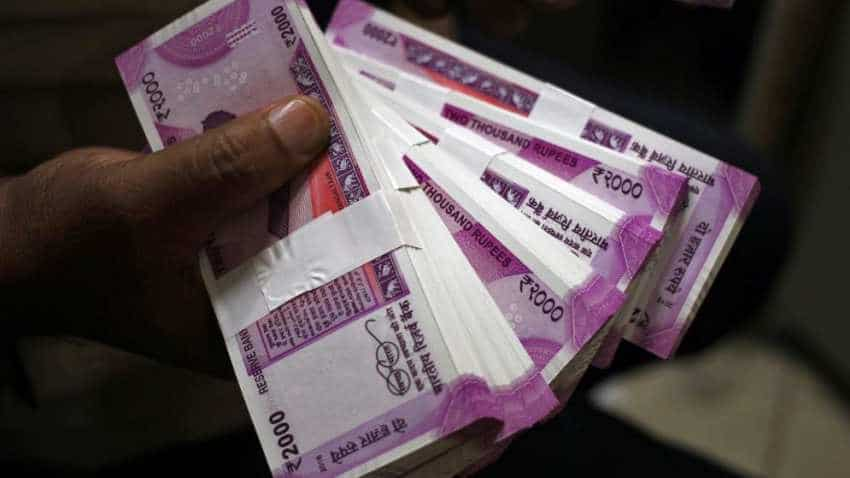Rupee to trade near record low over coming year; trade anxiety weighs: Reuters poll
India`s battered rupee will trade in a tight range in the coming year but not far from its historic low, hampered by higher oil prices and as trade tensions hurt emerging markets, a Reuters poll found.

India`s battered rupee will trade in a tight range in the coming year but not far from its historic low, hampered by higher oil prices and as trade tensions hurt emerging markets, a Reuters poll found.
The Indian currency has lost over 7 percent this year, with worries over the U.S.-China trade conflict pushing it to a new record low of 69.122 against the dollar in July, making it the worst performing Asian currency.
Taken after the Reserve Bank of India hiked rates to a two-year high on Aug. 1, the latest poll of about 40 foreign exchange analysts showed the rupee is now expected to trade at 68.22 per dollar in a year from about 68.60 on Thursday.
While the 12-month ahead consensus is slightly better than expectations in a July poll, it largely reflects a recent strengthening in the rupee rather than a brightening outlook for the currency. This firmness is mostly because of the Reserve Bank of India`s interest rate hikes, and hawkish bias.
"India has not been unscathed from the ongoing global trade tensions. China may have grabbed the bulk of the spotlight in terms of headlines, but the U.S. is also reviewing its trade relationship with India," noted Gajan Mahadevan, FX strategist at Lloyds Bank.
"Already, higher crude oil prices and concerns over global trade have driven a dramatic shift wider in the trade deficit. Alas, other factors could also mean the Indian rupee is unable to gain significant ground against the U.S. dollar despite two consecutive interest rate hikes from the RBI." The widening current account deficit, due to higher global crude oil prices and steady capital outflows, has weighed on the rupee.
Oil prices have rallied for much of 2018 on tightening market conditions due to record demand and supply cuts led by the Middle East producers.
While India remains the fastest growing major economy, a weaker rupee, stubbornly high inflation, elevated oil prices and global trade tensions pose the biggest downside risks to the economy.
With the U.S. Federal Reserve expected to continue its tightening cycle this year and next, the rupee may face a bumpy ride. The International Monetary Fund said on Wednesday the RBI will need to tighten policy further in order to stabilise rising inflation that is largely driven by higher oil prices and a falling rupee.
A separate Reuters poll of economists showed retail inflation in India likely fell to a four-month low in July as normal monsoon rains helped lower food prices. Inflation was expected to have eased to 4.51 percent in July from a five-month high of 5.0 percent the prior month.
WATCH ZEE BUSINESS VIDEO HERE
However, such a result means inflation would remain above the RBI`s medium-term target of 4 percent for the ninth consecutive month.
"Headline consumer price inflation is likely to have dropped due to a fall in food inflation. But core inflation is likely to have remained elevated, underlining why the RBI felt it needed to act by tightening policy in its two most recent meetings," said Shilan Shah, senior Indian economist at Capital Economics.
02:03 PM IST






 RBI may cut key interest rates by 175 bps in FY21: Fitch Solutions
RBI may cut key interest rates by 175 bps in FY21: Fitch Solutions RBI likely to announce repo rate cut of 25-40 bps: Report
RBI likely to announce repo rate cut of 25-40 bps: Report RBI may slash rates by at least 65 bps by June
RBI may slash rates by at least 65 bps by June New RBI motto: 'Cash is king, but digital is divine'
New RBI motto: 'Cash is king, but digital is divine' RBI Monetary Policy Report: REVEALED - From government measures to faster resolution of stressed assets, what all will boost growth
RBI Monetary Policy Report: REVEALED - From government measures to faster resolution of stressed assets, what all will boost growth